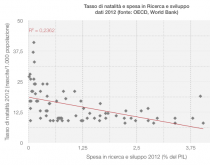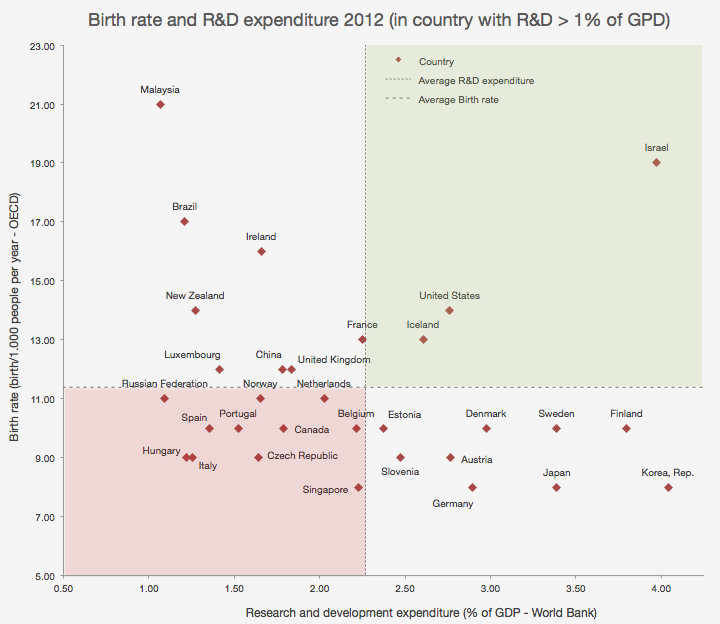
Angelo Panebianco in un articolo pubblicato sul Corriere della sera ipotizza una correlazione tra denatalità e calo degli investimenti in ricerca. Confrontando i dati riferiti al 2012 questa correlazione non sembra esistere.
An editorialist of Corriere della Sera - Angelo Panebianco - in this article explains the low propensity to invest assuming a correlation with the low birth rate in Europe and especially in Italy: low birth rate is a sign of a tired continent. However analyzing data OECD and the World Bank in 2012 seems not be correlated. In part because countries with higher birth rates are also the poorest and therefore generally do not have money to be allocated to public spending .
Even removing the countries that devote to R&D less than one percent of GDP (in the graph below) there seems to be no correlation between birth and spending. In the green square countries with birth and expenditure on R&D over the average (to report the outlier Israel) , in red square countries with birth and R&D expenditure below average. Italy, as is known, occupies the last position for both of these indicators . On the square at the bottom right the countries with a happy birth decline that does not affect the ability to think ahead and spend on R&D large share of its GDP.


